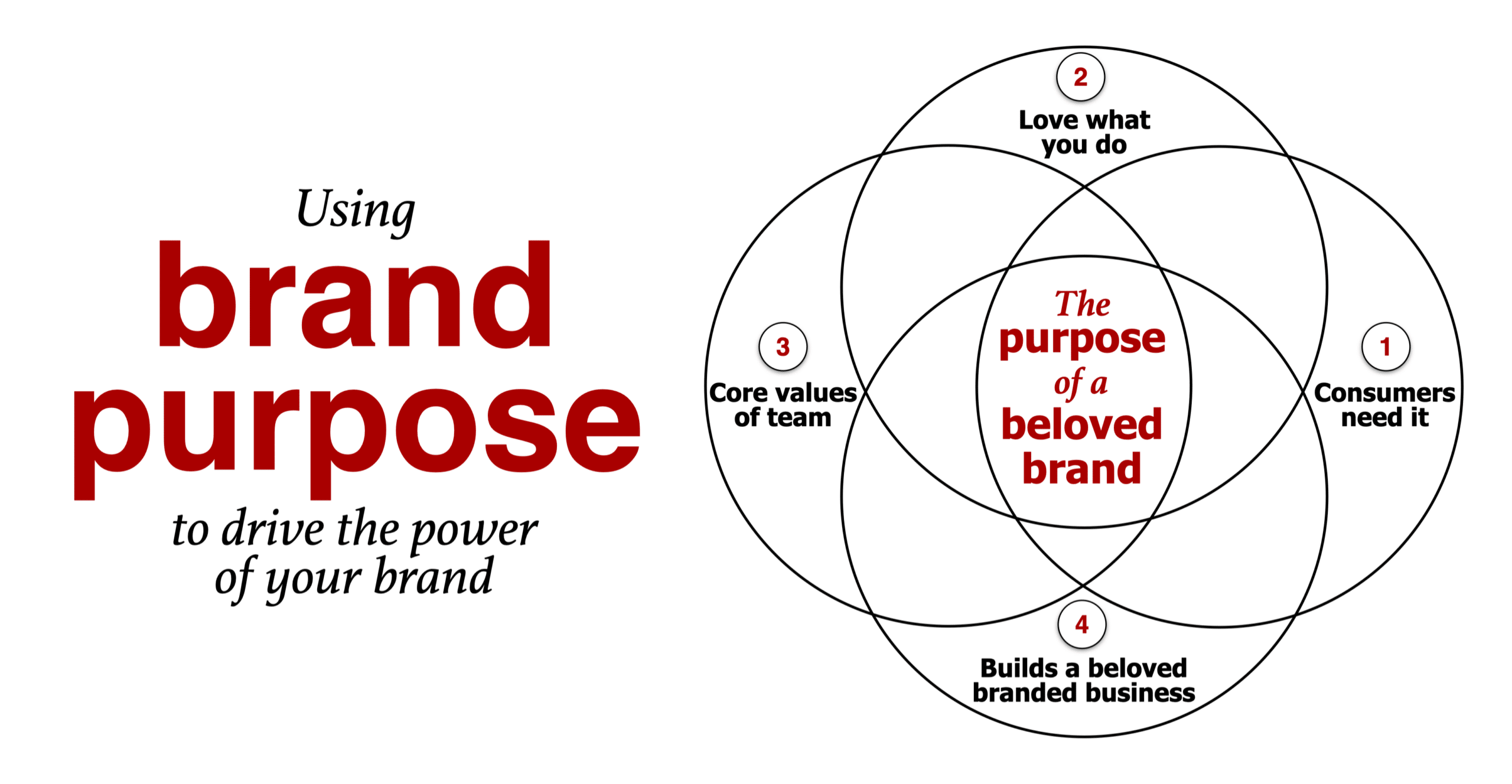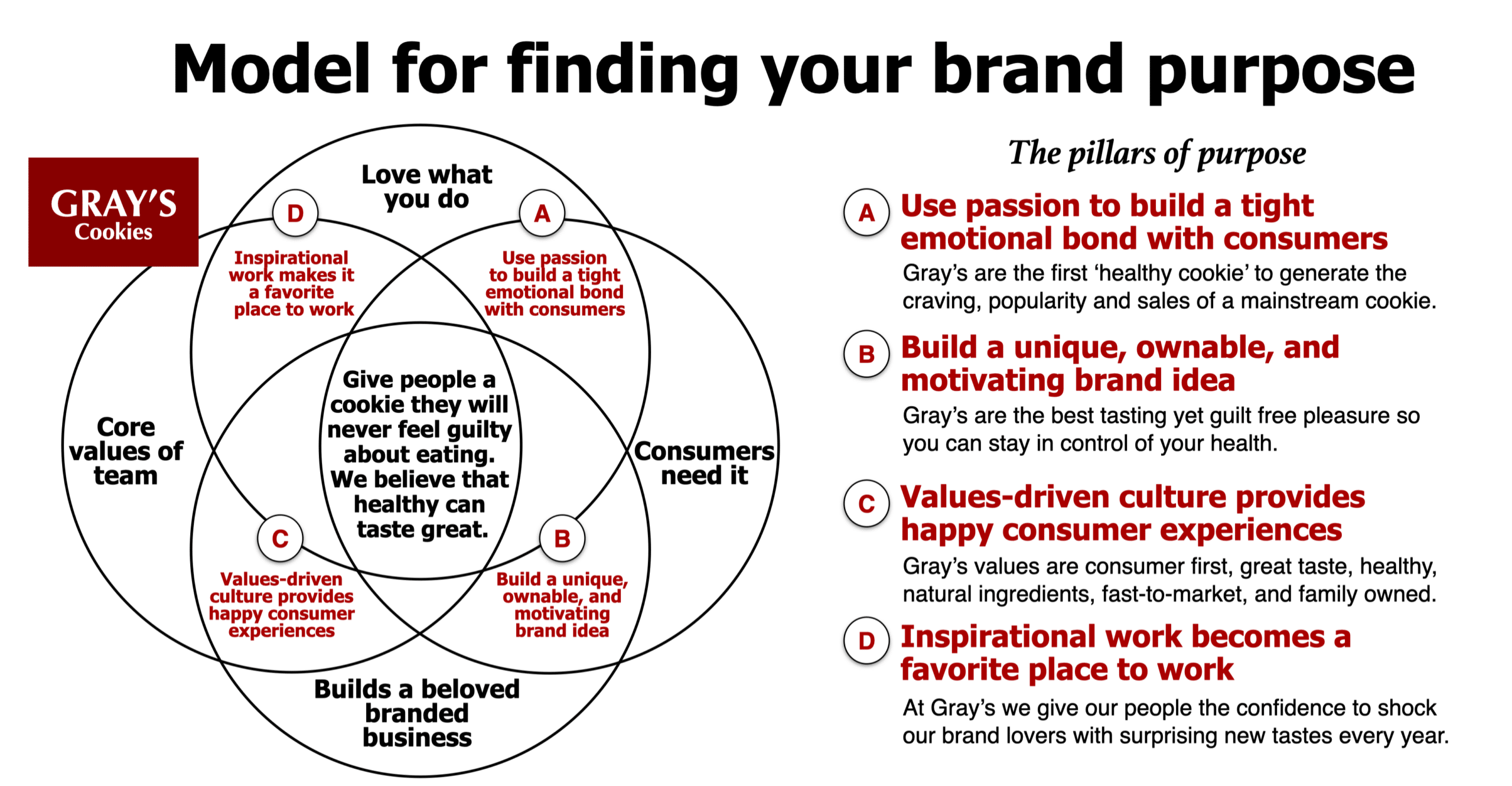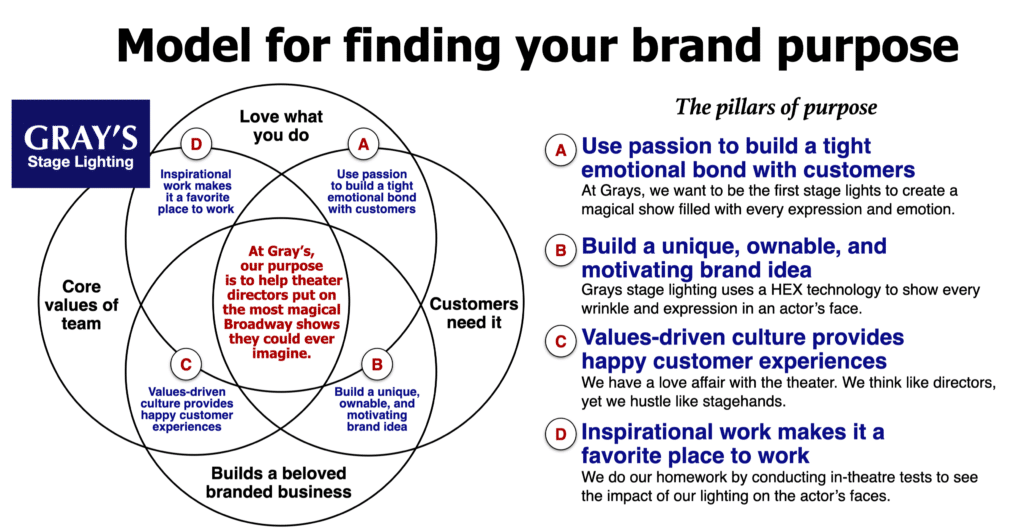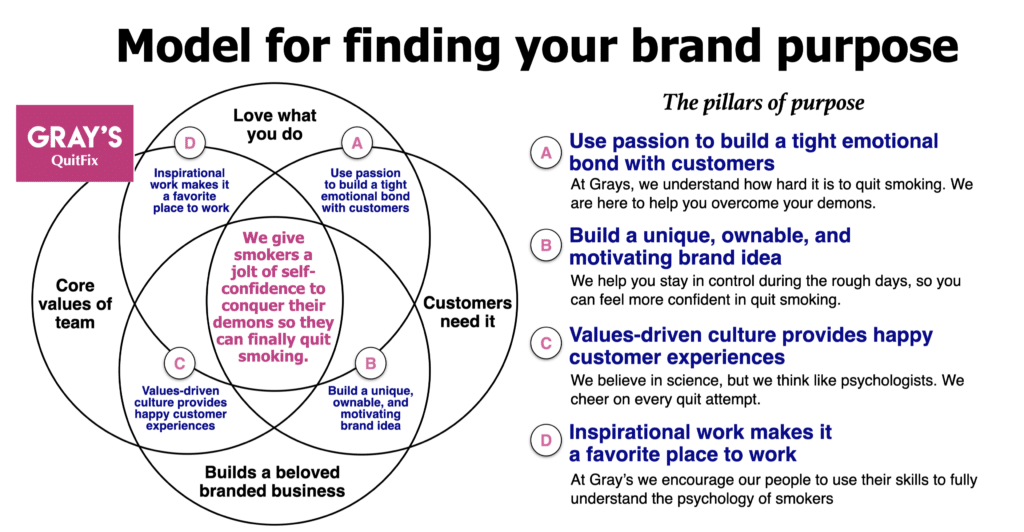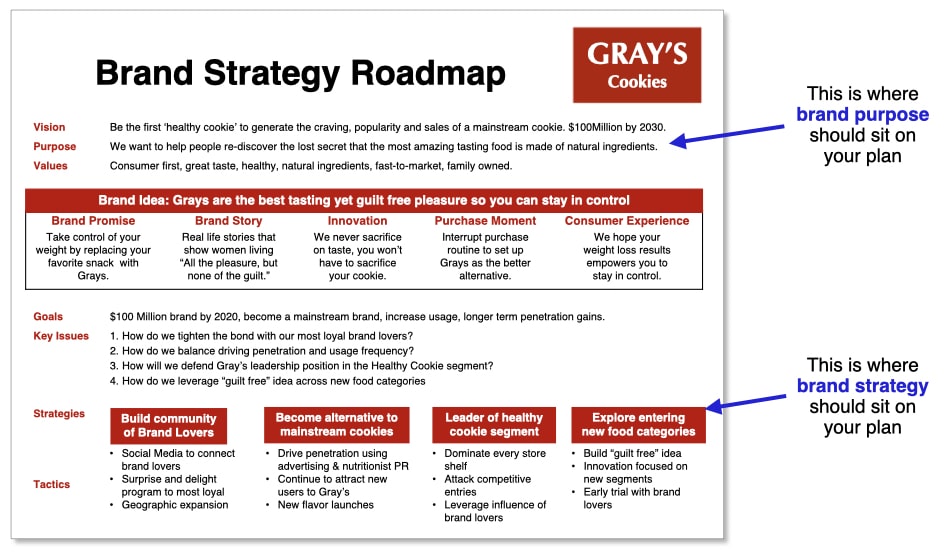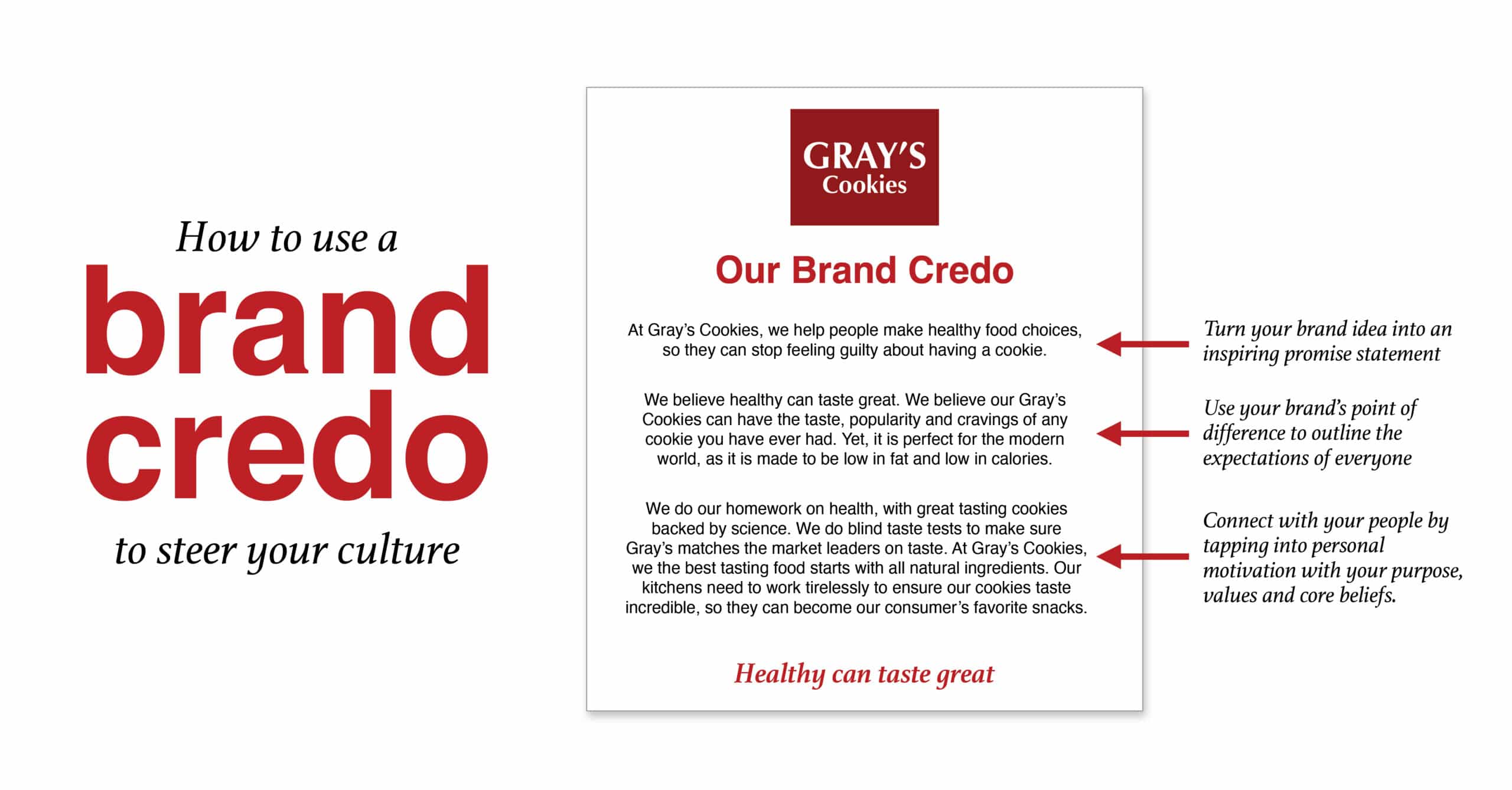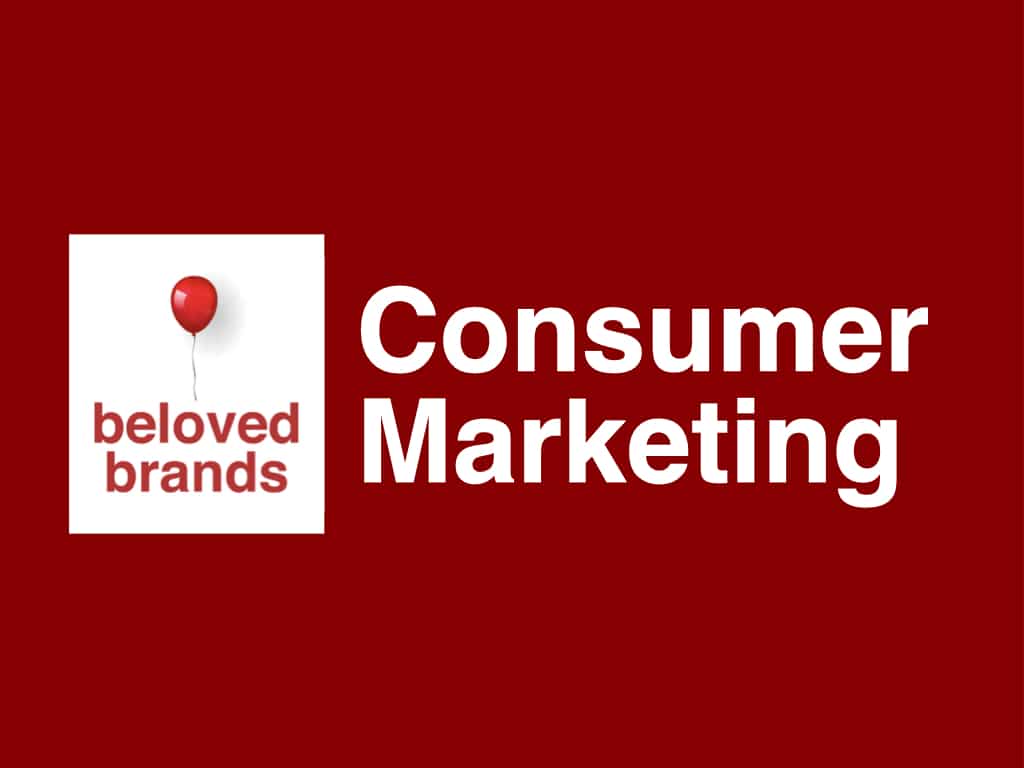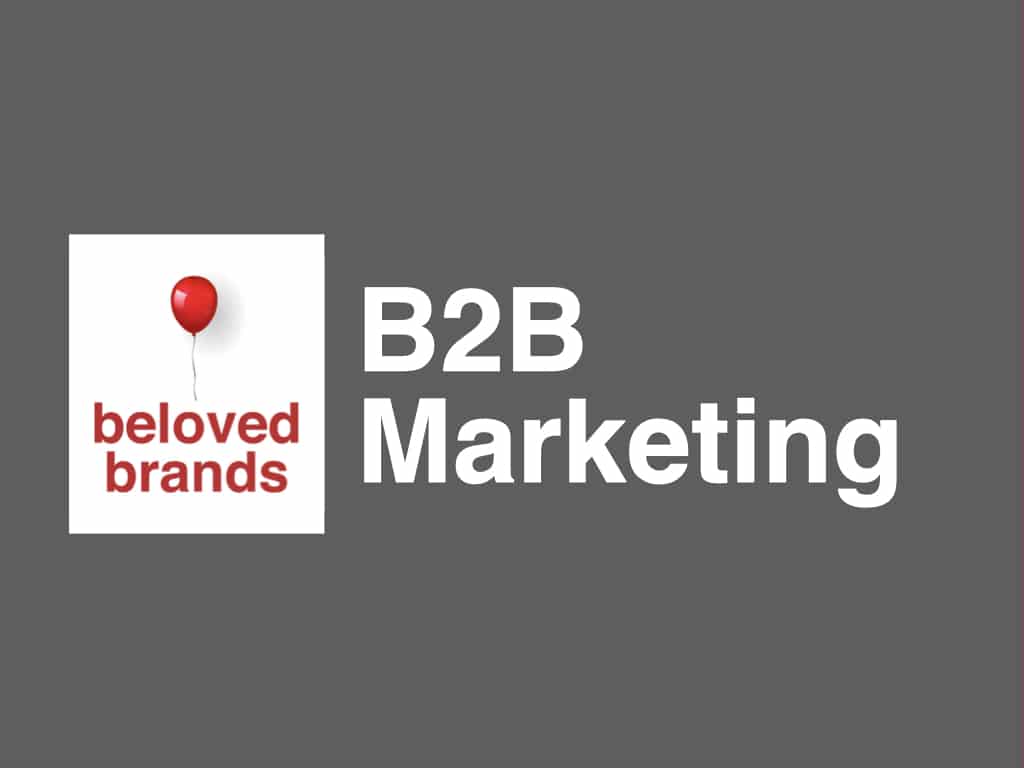The best brand purpose is the one you never have to tell the consumer. It should be focused internally to steer the culture of those who work behind the scenes of the brand. Front line workers should project the purpose. Your brand purpose should ooze out into the experience it creates for consumers. When your brand purpose connects with consumers, you will see the power of brand.
Finding your brand purpose answers the big question of “Why does your brand exist?” Most importantly, brand purpose should force you to explore the underlying personal and honest motivation for why you do what you do.
Brand purpose is not an advertising strategy. If you think it’s a label on your packaging that humble brags about a cause you support, then you’re doing it wrong.
You can’t just make up a purpose 70 years after a brand launches, just so you can sell more stuff. If you’ve never once talked about your brand purpose until 2019, your consumer might think you’re just faking it. Don’t mix up defining your brand purpose by attaching to a short-term cause that gets a lot of traction in the market.
What is brand purpose?
How to find your brand purpose
Ikigai (生き甲斐) is a Japanese concept that means “a reason for being.” We have borrowed this model to help find your brand purpose. It is an intersection of what you are good at, what you love, what the world needs, and what you can be paid for.
As a result, I will show how your brand purpose will come to life at the intersection that meets the consumer needs, fulfills your passion, stands behind your values, and yet still builds a successful branded business.
Borrowing the model for branding
Brand purpose can be a powerful way to connect with both employees and consumers, helping define your brand soul. While this Venn diagram (above) looks somewhat crazy at first, trust me, it works as an excellent tool for building your brand’s purpose.
This Venn diagram has four significant factors which match up:
1️⃣ How does it fit with what consumers need or want?
2️⃣ Does it fit the core values of your team?
3️⃣ Does it deliver your passion in loving what you do?
4️⃣ Can you build a beloved and successful branded business?
Beloved Brands playbook
Our Beloved Brands playbook goes in depth on everything you need to build a brand consumers will love. Learn about strategic thinking, brand positioning, writing brand plans, advertising decisions, media planning, marketing analytics, and financials.

Our readers tell us they keep our Beloved Brands playbook close by for whenever they need to take on a new project. Clearly, we are thrilled that 89% of Amazon reviewers have given Beloved Brands a 5-star rating. Also, we wrote a B2B Brands playbook and a Healthcare Brands playbook.
Branding with purpose
The how-to model helps find your brand purpose.
While the Venn diagram creates the purpose with the intersection of all four circles, you can find your own brand purpose by defining each combination of circles, one at a time, which expresses the four pillars that will deliver your brand purpose.
A. Focus your passion on building a tight emotional bond with your most cherished consumers.
To start, the intersection of the consumer needs (1) with loving what you do (2). All the passion you put into your work should focus on becoming a favorite brand of your consumers. You should love what you do and love what it does for your consumers. How your consumers react should drive your inner motivations and the power of brand.
B. Build your branded business around a unique, ownable, and motivating brand idea.
Next, the intersection of the consumer needs (1) with building a successful branded business (4). Build a brand idea to organize everything you do to deliver a consistent brand that will move consumers through their customer journey and become a beloved, high-growth, powerful, and profitable branded business. How tight you build a bond should drive your business success.
C. Inspire a values-driven culture to provide happy consumer experiences.
Then, find the intersection of living the values of the team (3) with creating a successful branded business (4). Your people are the “difference-makers” in delivering an incredible brand. They create a brand worthy of being loved to drive higher prices, lower costs, enter new markets, and create new uses. Link your people to driving the power of brand and the added profits of you generate.
D. Inspirational work makes it a favorite place to work.
Finally, the intersection of loving what you do (2) with the values of the team (3). Your values provide the backbone of your company, a set of beliefs and motivations linked with how people want to work. The values encourage your people to demonstrate their passion and create a culture where your people will never settle for OK when greatness is attainable. Allow them to put their passion into the brand; they can share in the pride of the team when the brand is successful. Tapping into the personal motivation of what’s important to them helps your team go the extra mile.
Brand purpose example
Brand purpose model for consumer brand
Take the work within the four pillars to build up the brand purpose. The final purpose statement for Gray’s Cookies is, “Our purpose is to help people re-discover the lost secret that the most amazing tasting food is made of natural ingredients.”
To illustrate, click on the brand purpose model diagram to zoom in.
Brand purpose model for B2B brands
Take the work within the four pillars to build up the brand purpose. The final purpose statement Gray’s Lighting is, “At Gray’s, our purpose is to help theater directors put on the most magical Broadway shows they could ever imagine.”
Brand purpose model for Healthcare brands
Take the work within the four pillars to build up the brand purpose. The final purpose statement Gray’s QuitFix is, “At Gray’s, We give smokers a jolt of self-confidence to conquer their demons so they can finally quit smoking.”
To illustrate, click on the brand purpose model diagram to zoom in.
Treat your brand purpose right
If you love brand purpose, you should treat brand purpose properly, and where it sits within your brand actually matters.
• Purpose is NOT a strategy.
• Purpose is NOT an advertising line.
Purpose answers, “Why does your brand exist?” It is the underlying personal motivation for why you do what you do. Purpose gives your brand a soul. It should sit very high on your brand strategy roadmap, as a guide to the rest of the plan.
Purpose is not a strategy
To illustrate, click on the brand purpose model diagram to zoom in.
Brand culture
Your first audience of your brand purpose should be your employees, not consumers
Internally, the power of brand is driven by values that form the backbone of your organization. They may come from your background, how you grew up, rules you identify with or how you see your priorities in life.
Your beliefs come from your experience, helping explain why and how you choose to do business, how you treat your people, and how you conduct yourself as a leader and as a person in the community. These beliefs should be personal, ethical, or rooted in frustration for how you see things happening in the world.
Your inspirations should excite the team members who work behind the scenes of the brand. Inspirations should stimulate your people to go beyond the norms of effort or passion.
For organizations, I believe it works best when your people have input into creating and building your values. Maybe that is one of my own core values in a bottom-up approach to building brands. However, the closer your values reflect the realities of what your people believe in, the more successful you will be in using those values to inspire greatness. You will realize the power of brand.
To illustrate, click on the brand values that reflect the brand purpose.
Brand credo
Using your brand idea to build a brand credo document
Having spent time at Johnson & Johnson, I was lucky to see how their credo document has become an essential part of the culture of the organization. Not only does it permeate throughout the company, but you will also likely hear it quoted in meetings daily. It is a beautifully written document and ahead of its time.
To illustrate, click on the brand credo that reflects the brand purpose.
First, take your brand idea and turn it into an inspiring promise statement, which explains to your people how they can positively impact your customers.
Next, use your brand’s core point of difference to outline the expectations of how everyone can support and deliver the point of difference. A great exercise is to get every department to articulate its role in delivering the brand idea.
Finally, connect with your people by tapping into their motivation for what they can do to support your brand purpose, brand values, and core beliefs. Make it very personal, and you will realize the power of the brand.
Make sure branding with purpose flows through every part of your brand, before you release it to the public
Patagonia
To read about how Patagonia sees purpose and power of brand:
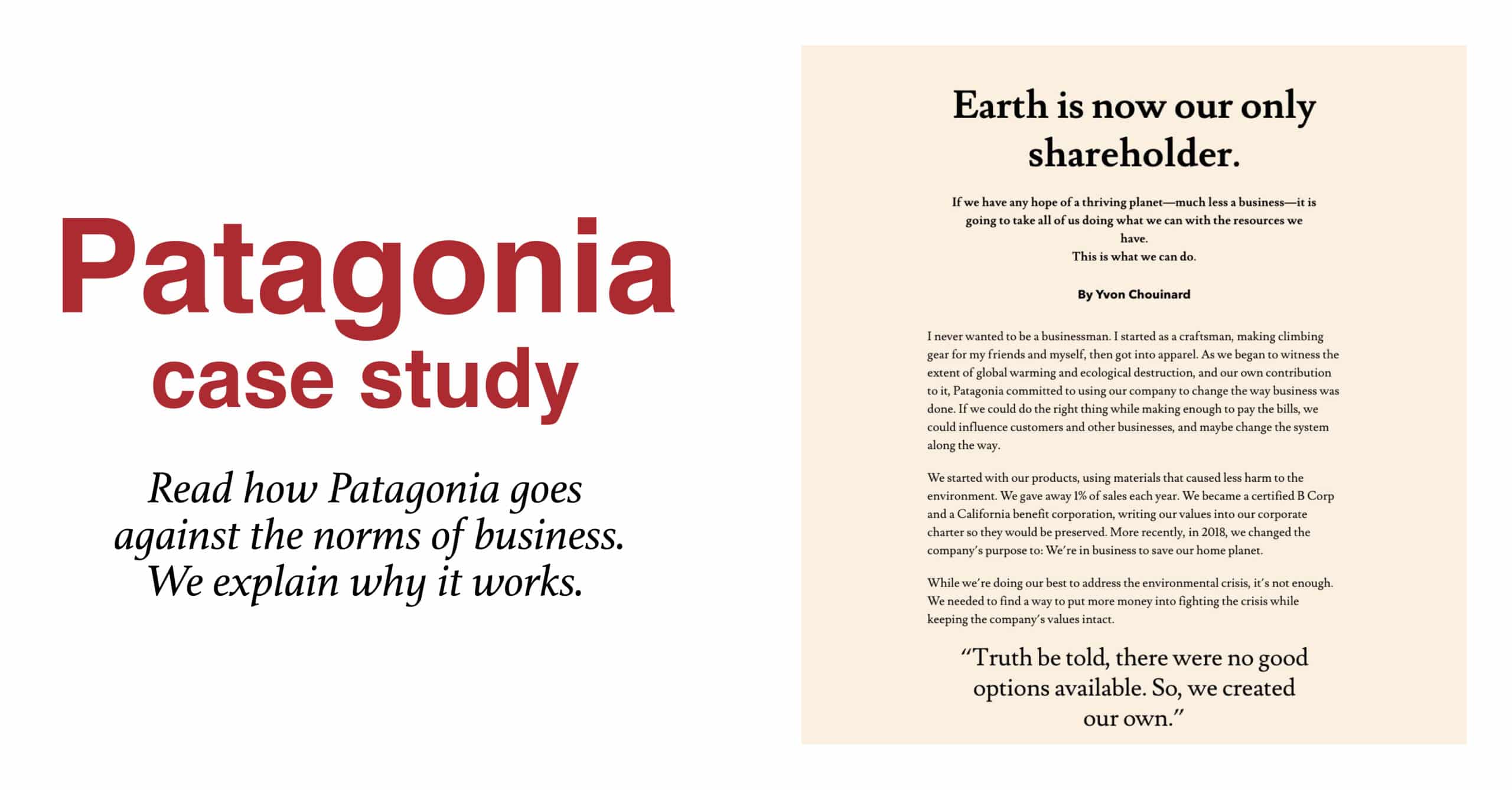
What type of marketer are you?
We believe that marketers learn best when they see our marketing concepts applied to brands that look like their own. We have come up with specific examples – consumer, B2B and healthcare – to showcase our marketing tools. Click on the icon below to choose your interest area.
Brand Management Mini MBA
Invest in your future. If you are an ambitious marketer, looking to solidify your marketing skills, our Brand Management Mini MBA will teach you about strategic thinking, brand positioning, brand plans, advertising decisions, and marketing analytics.
Have a look at our brochure on our Mini MBA program
Use > to move through the brochure or x to see the full screen.
We provide key chapters from our Beloved Brands Playbook, and a Brand Management Workbook with exercises to try in real-time. Earn a certificate you can use on your resume or LinkedIn profile.
Brand Purpose Frequently Asked Questions
What is a brand purpose?
A brand purpose answers “Why does your brand exist?” Undoubtedly, the brand purpose should force you to explore the underlying personal and honest motivation for why you do what you do. The brand purpose becomes an internally rally cry that helps define the culture. You can expand on the brand purpose by looking at values that steers the culture. Moreover, you can use a brand credo that inspires the team.
How do you write a brand purpose?
Our model for finding a brand purpose looks at four questions to brainstorm the ideas that make up a brand purpose.
- First, how does it fit with what consumers need or want?
- Then, how does it fit the core values of your team
- Next, does it deliver your passion in loving what you do?
- Finally, can you build a beloved and successful branded business?
Once you have the answers to those four questions, try to look for commonality in building out a brand purpose statement.
Why is brand purpose so important?
Internally, the purpose and values can form the backbone of your organization. It helps you define what you will do and what you will not do.
Your beliefs come from your experience, helping explain why and how you choose to do business, how you treat your people, and how you conduct yourself as a leader and as a person in the community. These beliefs should be personal, ethical, or rooted in frustration for how you see things happening in the world.
Who is Simon Sinek? What is Simon Sinek's theory?
Simon Sinek popularized the concept of “Why” in a Ted Talk from 2009. It has become the second most watched TED Talk of all time with nearly 50 million views. Simon Sinek’s Golden Circle theory tries to demonstrate how many of today’s most successful companies think beyond the practical, rational benefits of the products and services they offer. His “Start with Why” a book that is quite popular and can be found on Amazon. Start with Why


